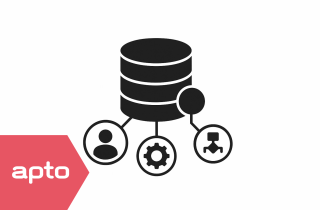
SIEM platforms promise visibility, fast threat detection, and effective incident response. But without a well-structured operating model even the best SIEM tools can underperform or fail entirely.
This blog follows on from our first on operating models – diving deep into why clearly people and processes, is key to getting value from SIEM.
People
Why People Matter in a SIEM Operating Model
SIEMs are not plug-and-play. They demand continuous tuning, monitoring, and evolution which means people are at the heart of daily operations. The platform’s ability to detect, alert, and deliver insight hinges on having the right people with the right skills doing the right tasks, consistently.
Common Pitfalls
Too often, SIEM operating models falter due to a lack of role definitions. Common issues include:
- No assigned owner for essential tasks like search tuning or dashboard maintenance.
- Skill gaps where teams are asked to manage complex field extractions or indexing without adequate training.
- Absence of backup coverage for illness, leave, or attrition, leading to unmonitored systems or outdated alerts.
- One-size-fits-all roles that ignore specialised skill sets (e.g., onboarding new data vs. writing detection rules).
Long story short, this causes delays, missed alerts, and poor insights – eventually eroding trust in the platform.
Best Practice
The most successful SIEMs use an MSP or define roles internally around the platform’s core operational tasks. A good starting point is creating a RACI for the following tasks.
| Task | Definition |
| Build/ augment a search | Building, enhancing, or debugging searches of indexed data |
| Build/ augment a dashboard | Building, enhancing, or debugging of visual dashboards |
| Build/ augment a lookup | Creation or editing of lookup tables used to enrich data |
| Create/ manage indexes | Creation of new indexes to manage data or alteration of existing indexes |
| Create a macro/ tag/ event type | Creation of knowledge objects to facilitate the index of data |
| Extract a new field | Develop or debug the extraction of particular fields from data sources |
| Data onboarding | Asist in getting new data into the platform from any source |
The crux is knowing when to execute the above tasks. Not all these tasks come about at request, many need to happen regularly to fix arising platform issues. Monitoring performance metrics will give you a key indicator for this.
Beyond this, mature teams plan for redundancy. Every critical task should have a designated primary and secondary owner. Roles must also be documented and aligned to skill level, ensuring handovers during sickness or staff turnover are seamless.
Processes
Why Process Clarity Drives SIEM Efficiency
Well-defined processes ensure consistency, reduce error rates, and allow the organisation to scale. SIEM operations are complex and high-stakes — a missed alert due to a broken search or outdated index can cost more than just time; it can cost reputational damage or regulatory fines.
Common Pitfalls
Without structured processes, teams fall into a reactive mode. Some common missteps include:
- Ad hoc search development, leading to redundant or conflicting logic.
- Untracked changes to dashboards or lookup tables, eroding shared understanding.
- Inconsistent onboarding of new data sources, resulting in noisy or incomplete logs.
- Lack of change control or versioning, making troubleshooting nearly impossible.
These failures reduce visibility, lower analyst efficiency, and compromise incident response quality.
Best Practice
A good SIEM operating model defines processes for each of the seven core tasks we talked about before:
Every process should clear documentation and collaboration.
Well-documented processes also enable faster onboarding of new staff, easier audits, and consistent delivery in managed service models.
Conclusion
By building an operating model that rigorously defines who does what and how, organisations can maximise return on investment, reduce operational risk, and maintain a resilient cybersecurity posture.
Our MSP Apto Operate can aid or even replace the need for an internal resource we’ve talked about, offering 24/7 performance monitoring and an in-hours service desk to proactively detect and remediate health issues on your Splunk platform.
Read more here.
-

31 July 2025
Operating Models – People and Process
-

29 July 2025
Splunk Observability
-

22 July 2025
Data as a Component of the Overall Platform
See how we can build your digital capability,
call us on +44(0)845 226 3351 or send us an email…
